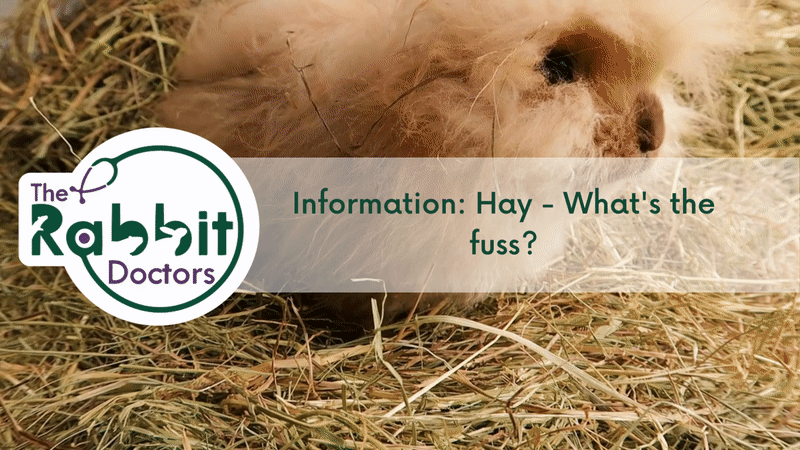Hay is the most important part of your rabbit's & guinea pig's diet. Why?
Hay is a vital part of your pet's diet for various reasons. It is high in fibre, which helps to keep their digestive system in excellent condition. Hay also encourages your bunny to drink more water. This makes them urinate more frequently and helps protect them from the formation of bladder sludge and kidney stones. Herbivores teeth keep growing their whole life. The chewing action required to eat hay helps to keep their teeth growing normally. Topping up their supplies regularly can keep your pets happy!
Types of hay:
Different types of hay have different amounts of calcium and this can vary depending on the time of year, location of the hay grown and even each bale produced!

We recommend your main hay for a healthy pet to be Oaten hay. Oaten hay is a cereal hay, and the same plant that we harvest oat grain from. Oaten hay is generally harvested before the oat grain develops, or before it is fully developed. While oaten hay has a fairly low calcium content, it can have a higher sugar content than other hays. This can make Oaten hay more palatable and encourage rabbits to eat more hay, but it can also contribute to weight gain and uneaten caecotrophs in rabbits that may be more sensitive to dietary carbohydrates.

The majority of Timothy hay in Australia is imported from the US or UK as it is not a common hay grown in Australia. However, small amounts are starting to be grown in cooler, wetter areas of Australia like Victoria and South Australia, and so locally grown Timothy hay will hopefully become more common. Timothy hay is a grass hay, and the Timothy hay grass is not harvested for grain like Oaten, Wheaten, or other cereal hays. Timothy hay, while lower in sugar and potentially less palatable than Oaten hay, has a greater leaf to stem ratio and is a softer textured hay, which some pets prefer.
Timothy hay is suitable to feed as a main hay source, or can be fed in combination with Oaten and other grass hays.

Grass and meadow hays are usually a combination of one or more species of non-cereal grasses. Grass hays can be sown as a single monoculture, like Timothy or Rhodes hay, or can be sown as a mix including Ryegrass, Clover, Brome, and Kangaroo grass. These hays can differ greatly in nutritional content depending on the species, location, stage of growth at cut, and storage conditions, and some grass or meadow hays can be as high in sugar content as oaten hay, especially mixes containing Annual Ryegrass. Clover-containing mixes can also be higher in protein. Grass and Meadow hays often come in much thinner strands than oaten hay, and are generally an even mix of leaf and stem.
Grass and meadow hays are suitable to feed as a main hay source, but it can be difficult to maintain a consistent nutritional content when new bales are started. Grass and meadow hays that have been nutritionally analysed may be available from some sources.

Straw is what is left over after harvesting hay and is often sold as 'bedding' for pets and livestock. Straw is not a food and has very little nutritional value for our pets.

Lucerne or alfalfa hay is a leguminous hay that has higher protein and calcium content than oaten, grass, Timothy, or meadow hays. While lucerne hay often gets a bad reputation due to the increased calcium content, it is suitable to feed as a treat hay 2-3 times a week in small amounts, and can be useful to help underweight or rapidly growing pets gain weight. Because of the increased protein content, lucerne hay is often very palatable and enticing for rabbits to eat, and it can also be useful to encourage rabbits that are hesitant to eat hay, or have chronic medical conditions that reduce their ability to eat hay. Lucerne hay can also be used in food puzzle toys to provide environmental enrichment.
As lucerne hay is not recommended to feed as a main hay source, discuss this option with your vet if you feel that your pet may benefit from this.
Calcium content and uses:

Frequently asked questions:
What type of hay should I feed my pet?
What should I look for when buying hay?
How much hay should you feed your pet?
I’ve heard Lucerne hay is bad for rabbits…?
What can I do if pet does not like hay?
What is chaff?
Chaff is short cut hay. Chaff is also an option for your pet which is cut up hay and this can be added into a bowl of 'pellets or mixes' to encourage hay intake and be a good transitional option!

